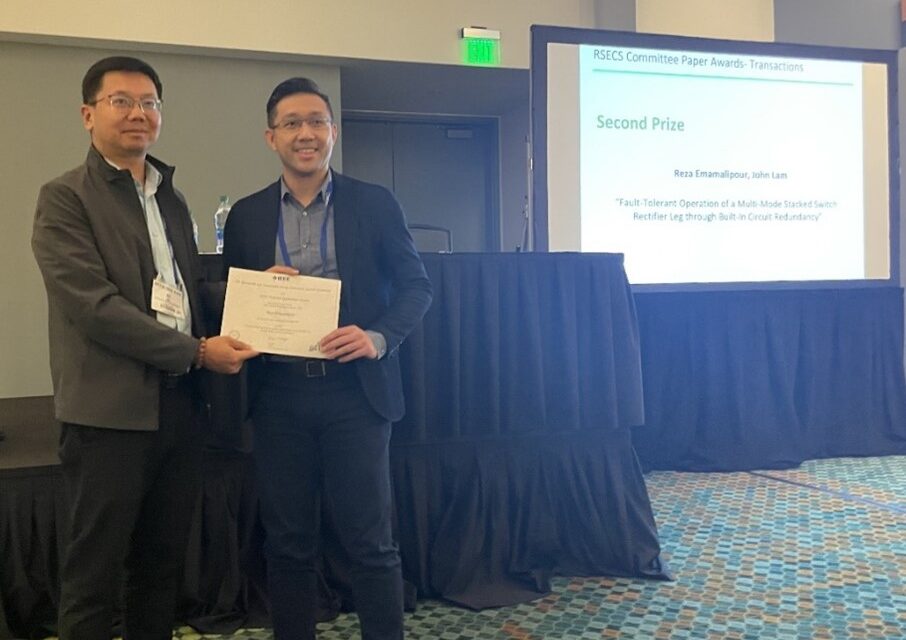Lassonde Professor John Lam recognized for his energizing work in power electronics
Tags:

Many electrical energy systems ranging from household devices to industrial equipment require abundant power supply to function. While starting an electric device may seem as simple as flipping a switch, the electrical energy supporting these systems must first be converted to a usable form of power through processes governed by the field of power electronics.
John Lam, associate professor in the Electrical Engineering & Computer Science department at York University’s Lassonde School of Engineering, is a true innovator in this field, primarily focusing on the development of leading-edge power electronics technologies for renewable and reliable electrical energy systems.
In recognition of his work on this subject, he was recently honoured with a second prize paper award from the Institute of Electrical and Electronics Engineers (IEEE) Industry Applications Society (IAS). The awarded paper titled, Fault-Tolerant Operation of a Multi-Mode Stacked Switch Rectifier Leg through Built-In Circuit Redundancy, was developed alongside his former PhD student who is now working in the power electronics industry, Reza Emamalipour, and published in the IEEE Transactions on Industry Applications (TIA) journal.
“IEEE journals are top ranked in electrical engineering, particularly in the field of power electronics and power engineering; any prized-journal paper award from IEEE is prestigious,” says Professor Lam. “This award is only given to the top three papers from more than 150 submissions, so I am very happy to receive this recognition. This achievement also helps build international awareness of work in my field, and the reputation of Lassonde.”

The awarded paper proposes a method which can improve the resilience and reliability of power electronic converter circuits, and therefore, entire electrical energy systems.
“Many existing electrical circuits don’t have fault-tolerant operation; if one component fails, you have to replace the entire device,” says Professor Lam.
To solve this issue, Professor Lam and Emamalipour tested and developed a multi-mode power electronic circuit with a control scheme which allows electrical circuits to continue adequate function amidst circuit failings. By incorporating built-in circuit redundancy, their proposed system demonstrated the ability to switch between different operating modes, allowing for continuous power supply at high power efficiency without interruption from any cases of circuit failure.
This work has a wide range of pragmatic applications, boasting the potential to improve the longevity and reliability of power electronic circuits which support technologies ranging from electric vehicles to household electronics. Improving the lifetime of electric circuits can also help reduce the need for costly and burdensome system repairs and replacements.
“I am always pleased to see my students’ research receiving recognition and I want to give a lot of credit to my student who was involved in this work,” says Professor Lam. “He helped execute the research very well, even with circuit debugging, different hardware challenges and testing. This project took a lot of work.”
Professor Lam will continue to advance the field of power electronics through ongoing and future projects with the ultimate goal of improving the efficiency, reliability and cost-effectiveness of electrical energy systems.